- News
- Reviews
- Bikes
- Accessories
- Accessories - misc
- Computer mounts
- Bags
- Bar ends
- Bike bags & cases
- Bottle cages
- Bottles
- Cameras
- Car racks
- Child seats
- Computers
- Glasses
- GPS units
- Helmets
- Lights - front
- Lights - rear
- Lights - sets
- Locks
- Mirrors
- Mudguards
- Racks
- Pumps & CO2 inflators
- Puncture kits
- Reflectives
- Smart watches
- Stands and racks
- Trailers
- Clothing
- Components
- Bar tape & grips
- Bottom brackets
- Brake & gear cables
- Brake & STI levers
- Brake pads & spares
- Brakes
- Cassettes & freewheels
- Chains
- Chainsets & chainrings
- Derailleurs - front
- Derailleurs - rear
- Forks
- Gear levers & shifters
- Groupsets
- Handlebars & extensions
- Headsets
- Hubs
- Inner tubes
- Pedals
- Quick releases & skewers
- Saddles
- Seatposts
- Stems
- Wheels
- Tyres
- Health, fitness and nutrition
- Tools and workshop
- Miscellaneous
- Tubeless valves
- Buyers Guides
- Features
- Forum
- Recommends
- Podcast
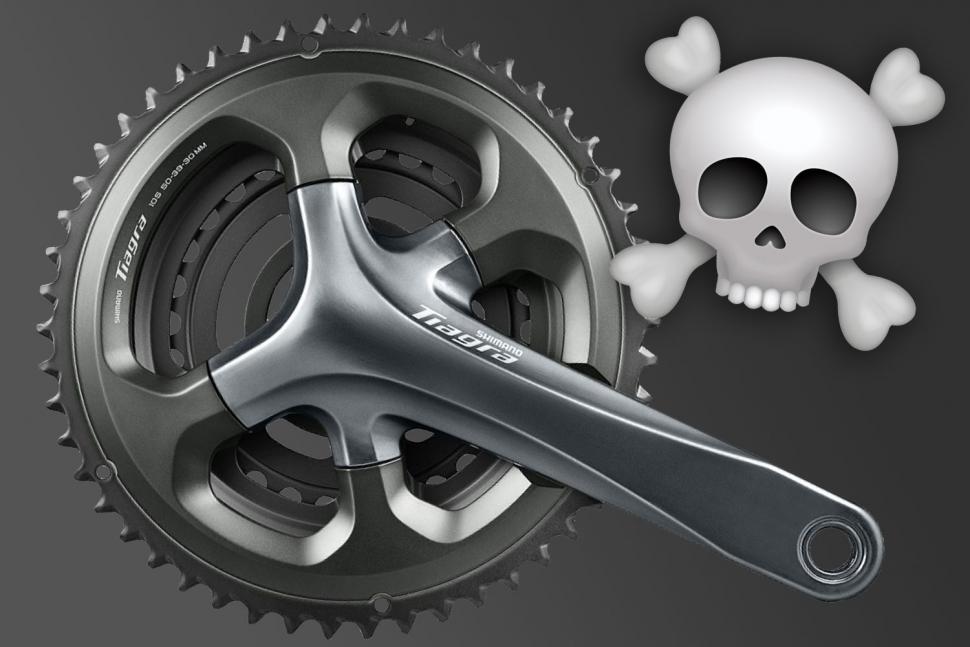 The death of the triple chainset August 2018
The death of the triple chainset August 2018Are we seeing the death of the triple chainset?
Triple ring chainsets have fallen out of fashion in recent years, but are they threatened with extinction?
Modern road bikes can come with any one of a number of different types of chainset fitted as standard - there's standard, compact and semi-compact chainsets for starters. But just because your bike came fitted with a certain type of chainset doesn't necessarily mean it's the right one for you.
We asked SRAM, Shimano and Campagnolo if they feel that the triple chainsets days are numbered. Here are their replies:
Campagnolo
Campagnolo hasn't introduced any new triple chainsets since 2012, but their Athena 11-speed, and Centaur and Veloce 10-speed triples are still available.
Campagnolo told us:
While most athletes are covered by the gearing offered by compact chainsets and larger cassettes, there are still a faithful few who are quite keen to use the triple. Several requests from areas in France, Belgium and Canada strangely enough.
However, with the advantages of the compact crankset and a movement towards larger tooth count cassettes we believe that those wishing to run a triple ring crankset will diminish further as they will adopt increasingly more often the two chainring solution. At the moment we still offer the triple.
SRAM
As we mentioned above, SRAM has never bothered with road bike triples, and in recent years has been promoting single-chainring gear systems as the ultimate in simplicity even for racing. What they had to say about triples isn't very surprising then:
Is the triple chainset dead?
Dead & buried.
Where do you see the future of modern road bike chainsets?
There’s a bright future for 1x. Simpler, quieter, more secure. Current cassette options allow gear range for most cycling disciplines. 1x even provides a more aerodynamic drivetrain for TT and triathlon. 2x remains dominant, of course, because it can provide the widest gear range and closer gear ratio steps.
Shimano
You could once get a Dura-Ace triple chainset if you were building a very posh pass-stormer, but no more. As its top-end groupsets switched from 10 to 11 sprockets, Shimano quietly dropped triples.
Shimano told us:
Within Shimano's current road line up triple chainsets are more common at Tiagra level and below. These groupsets attract a wider audience/riding style and therefore the demands on the components are different to those favoured by competitive and performance cyclists.
Triple chainsets have closer gear ratios, making the steps between the gears easier to move through, and therefore increasing the efficiency of personal performance. For many riders, a triple chainset provides options to allow you to continue cycling in many circumstances/conditions.
However, at the competitive end of cycling, trends for many years have been in favour of double chainsets. Wider cassette ratios are now able to cover the vast majority of gear ranges, in combination with lower crankset weight values that performance athletes demand.
Which chainset is right for you?
So if the triple is dead, what are your common choices? Let's go through the main road systems to help you find the right one for you.
53/39 'Standard' or racing set-up
Ideal for: Pros, strong riders, or flat conditions (maybe a bit more than that but you get my drift)
50/34 'Compact'
Ideal for: Most people, good all-rounder ideally suited to hilly conditions
52/36 'Semi-compact'
Ideal for: Increasingly pros, but also the rest of us mortals too, strong all rounder, ideal for hilly conditions, paired with 11-32 cassette should get most people up even the biggest mountains.
48/32 and 46/30 'Sub-compact'
Ideal for: Touring, gravel and adventure bikes, it takes the existing idea of the compact chainset a step further, yielding gearing that’s ideal for bikes used across a range of surfaces and terrains
1x11 single chainring
Ideal for: Cyclocross, gravel and adventure riding. The single ring and wide-range (10-42t) cassette provides much of the range of a compact and shifting simplicity along with increased mud and ground clearance
- Read more: Which chainset is right for you?
The compact killed the triple
Gearing options have increased substantially over the years with the advent of the compact chainset the biggest reason for the demise of the triple. The arrival of the compact immediately sparked debate surrounding the death of the triple chainset, and they’re now much less noticeable in any of the big three groupset manufacturers - SRAM, Shimano and Campagnolo - ranges than they used to be.
Before the compact came along, your crankset choice was largely split between a double for racing and a triple for touring and Audax riding. At this time of limited choice, a triple was appealing for any non-racing applications, particularly touring or Audax bikes laden with luggage, the lower gears helping to spin up the climbs.
The new wave of sportive bikes sparked the development for a chainset that offered most of the range of the triple but with better chainline, lower weight and, arguably, better looks on a sporty carbon bike.
- Struggling on the hills? If you need lower gears to make climbing easier, here's how to get them
The compact was an instant success. Popularised by FSA soon after the turn of the century, the company met these sportive bike requirements and when paired with the increased range of the 10-speed cassettes introduced at roughly the same time, provided most of the same low gearing as a typical triple setup.
A triple does offer a wide range of gears, but there is a lot of duplication. A 50/34 compact with a 12-29 11-speed cassette provided minimal difference in range from a 53/42/30 triple with a 13-29 cassette. The small compromise in reduced gear choices and range was compensated by reduced less gear duplication, lower groupset system weight and a narrow Q-factor.
Compacts were even used in professional races too, Tyler Hamilton using a compact on a mountain stage of the 2003 Tour de France. The fate of the triple for the new breed of performance focused sportive bikes and cyclists was sealed forever.
The chainset evolution
The evolution of the chainset and the reduction of the number of rings has been helped by the growing cassette range and increased gears of each subsequent groupset release. Back in the day, you’d be lucky with a 6-speed, 11-23 cassette, fine for racers, but the only way to get low gears without huge gaps — for touring, Audax or leisure cycling — was to fit a triple chainset.
With the advent of 9, 10 and 11-speed groupsets and an increased cassette range, with 11-30 and 11-34 now common options, there’s less need for a triple chainset. You can now get a wide spread of ratios with less duplication of gears.
A triple chainset is essentially a double with a smaller chainring bolted on. Triple chainsets require special front derailleurs and shifters, along with a matching long cage rear derailleur to accommodate the long chain needed to cover the full range of sprocket options. Reducing the need for specific components was a boon to manufacturers as it tidied up product lines.
And so they fell out of favour with manufacturers. Shimano and Campagnolo wasted no time dropping triples from their top-end ranges, Dura-Ace and Record respectively, replacing them with new compacts. SRAM didn’t even make a triple chainset when it first got into the road bike groupset market, and has been a proponent of the single ring drivetrain.
Now there are an increasing array of options. The semi-compact (52/36t) has been a hit, popular with racers and performance minded cyclists, and some reckon it even threatens the compact.
More recent is the sub-compact (48/32 and 46/30) for adventure and touring cyclists where lower gears for tackling hillier terrain with heavier bikes are required. With a 46/30 and an 11-34 cassette you're looking at the kind of gear range that used to be only easily achieved with a triple, and it's possible to go even wider and lower if you bend the rules a bit.
- First look: Does the Praxis Works Alba 48/32 herald the era of the sub-compact chainset?
Add to the mix too SRAM’s 1x11 approach, which pairs a single chainring with a super wide-range cassette, and it looks like the triple chainset has been pushed to the very fringes of cycling.
Do you think the triple is dead or is there still a place for it?
David worked on the road.cc tech team from 2012-2020. Previously he was editor of Bikemagic.com and before that staff writer at RCUK. He's a seasoned cyclist of all disciplines, from road to mountain biking, touring to cyclo-cross, he only wishes he had time to ride them all. He's mildly competitive, though he'll never admit it, and is a frequent road racer but is too lazy to do really well. He currently resides in the Cotswolds, and you can now find him over on his own YouTube channel David Arthur - Just Ride Bikes.
Latest Comments
- mctrials23 10 min 59 sec ago
Part of it is that but a large part of it is just deeply ingrained hatred of cyclists because cyclists are blamed for ridiculous things and drivers...
- chrisonabike 22 min 46 sec ago
The exact situation shown in this photo is pretty common near me....
- brooksby 1 hour 24 min ago
Nope - had an urgent appointment with his tax advisor
- brooksby 1 hour 28 min ago
I'm not sure which one of them looks more like a crook…
- OnYerBike 2 hours 1 min ago
It might not be Miche-specific, but across all the thru-axle, disc brake wheelsets in my household (including Hope, DT Swiss and Bitex hubs), none...
- S.E. 4 hours 12 min ago
That made me think of that "Hot Fuzz" comedy movie... so many truths in it.
- Rendel Harris 6 hours 5 min ago
Good to see a V-brake option available for all those people who ride Cosmic Elites with V-brakes...seriously, you must know really that the answer...
- mattw 6 hours 43 min ago
Get thyself over to Buildhub - a community owned forum where I am on the moderation team ("Ferdinand") which is about self-build and renovation....
- Destroyer666 16 hours 47 min ago
Nonono, not those, but those that have constructed Italian cars and motorcycles that have been driven to hundreds of race and championship...
- RoubaixCube 16 hours 56 min ago
This may well be the case although Im unaware of the brands popularity on their home turf. I used to see them being advertised more in the UK...
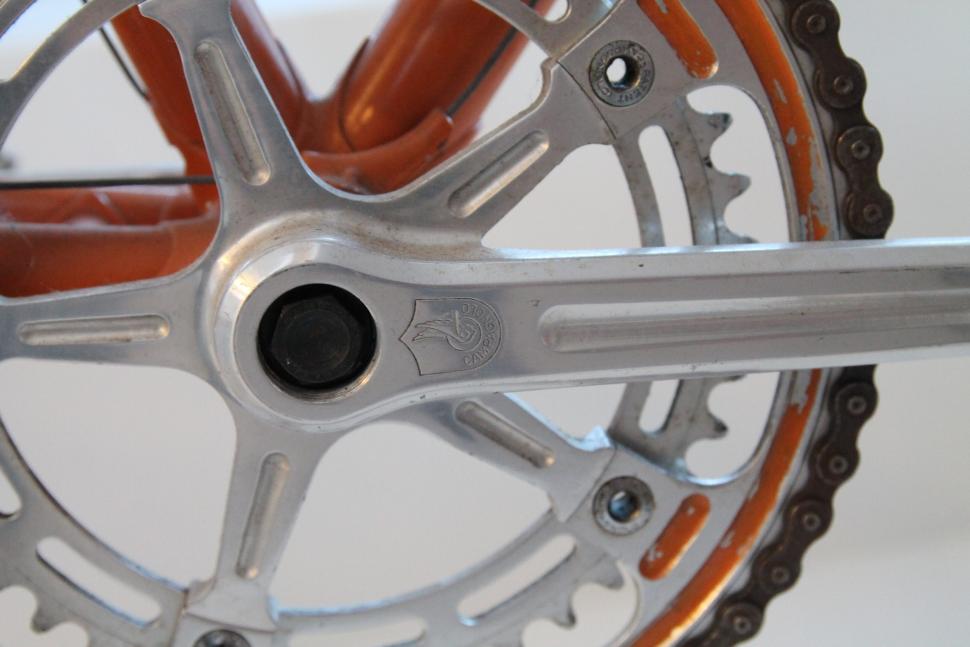
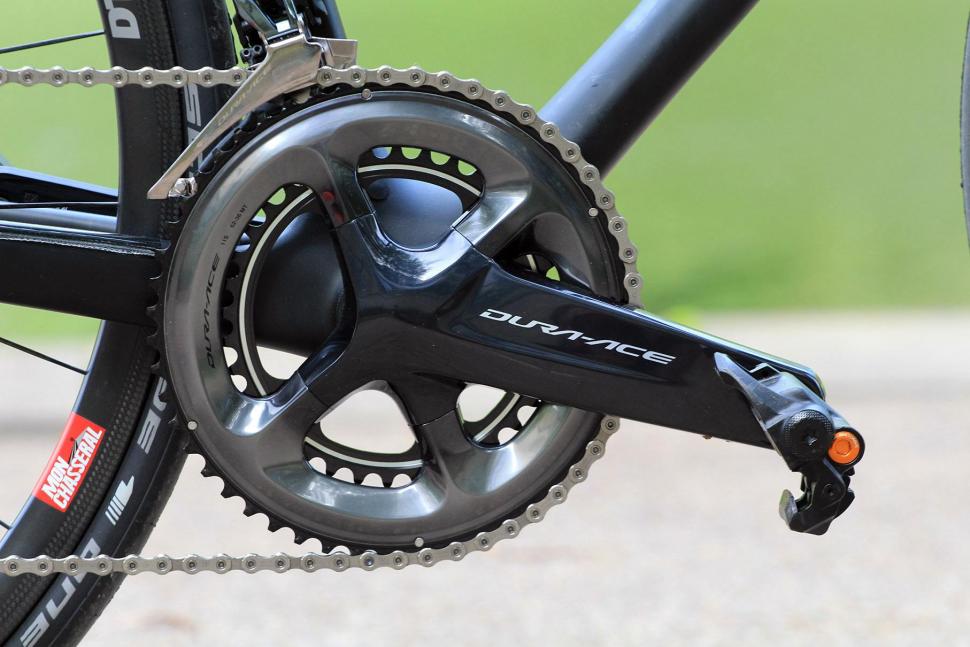
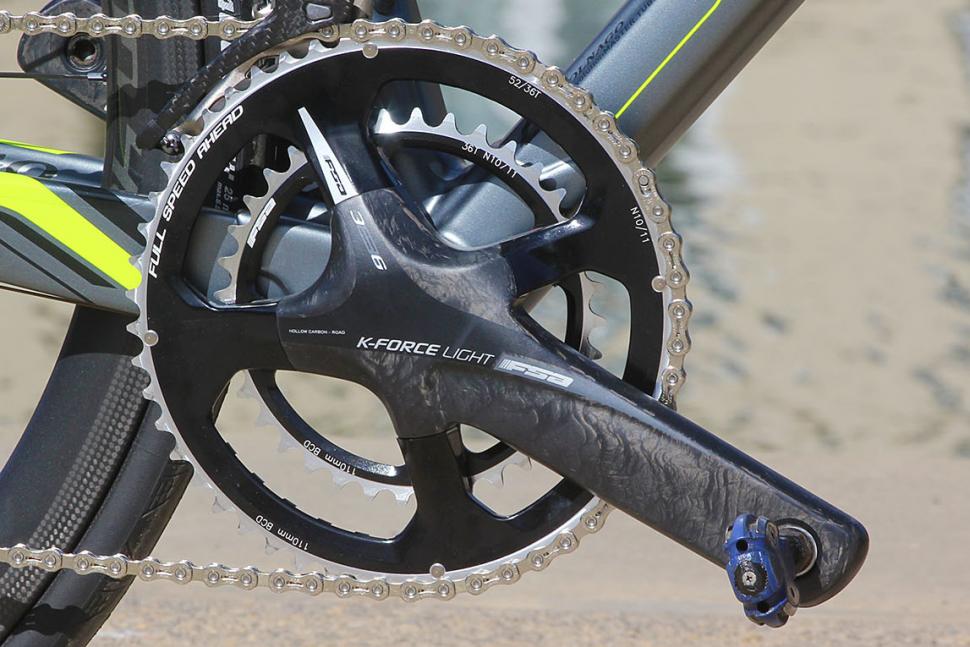
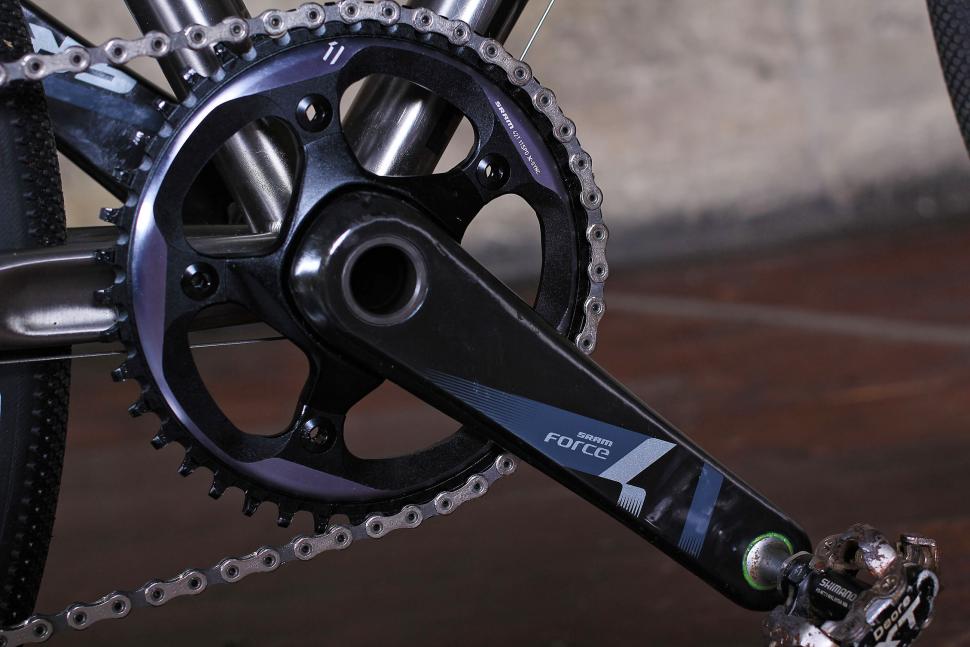
Add new comment
128 comments
I tried twice with compacts, gave up after a couple of months. I found the gear run on them appalling. I've settled on Campag triples for my main rides, with double on race bike and summer bike. Rest of the time it's a 53/42/30 or 53/39/30 triple, with a 12-25 or 12-27 9 spd rear. Gives me a perfect doubld eset up with a granny. Fabulous for getting me up Scottish hills.
I used to ride a 53x39 by 12-23/5 when I lived in Herts, but after moving up here to Scotland, foud that a bit challenging.
I've bought 3 compact chainsets, eBayed all of them within 6 months. Gear runs were rubbish, you basically had to cross chain them to make them usable. In the meantime, I bought a cheap Campag Triple to see how it went. Fabulous. I now run a 53/39 and 12-26 arrangement, with the bonus of a 30x12-26 if I get tired / stuck. As I still run Campag's 9 speed gearsets, I can swap between double and triple without making major changes. Just bough t a 2nd spare chainset from eBay, with my 4 spare rear derailleurs, 3 spare front derailleurs, 5 spare "proper" BBs (Square Taper) in Italian and British threads, I'm set for the medium term future. Having ridden double all my life (except when I was 10, when I had a 1X (utter pish btw)), the Triple makes a lot of sense in my late 50s. Even toyed with converting the TT bike to run one for those late season hilly TTs.
For those who complain about it being difficult to set up a triple front derailleur; they should upsklill and learn to do it correctly.
As for triple chainsets; Spa Cycles still sell 'em in abundance.
I can't get on with compact chainsets. My daily ride (used for twenty miles of hilly commuting as well as longer rides at weekends) is fitted with a 30-39-52 chainset and a 7 speed 12-26 on the back; even though I rarely use the smallest chainring it's nice to know it's there for emergencies. I also own a Ribble winter bike which arrived fitted with a 34-50 compact: that lasted for 40 miles before I changed the stupidly small inner chainring for a 40 tooth one. The jump between chainrings is just too big and I found I was dropping down into the small ring and suddenly spinning like a food mixer.
Hello old friend...
Mine are still going strong.
And they are on 26inch rim brake mountain bikes. One with square taper bb, and cantilevers.
The only reason to adopt a double crankset is to access to hydraulic disc brakes. As a cycle-tourist I need lower gears, I mean 22 front/36 rear or equivalent, so a double 22/38 crankset paired to an 11-36 cassette will be fine on 9 or 10-speed setups.
Wider cassettes may help on a 2x11 setup, especially those with XD drive and 10-42 or 9-42 ratios, this allows you to pair your wide-range cassette to a 26/42 crankset and achieve a better "cruise speed", but let's be honest, when you're climbing on a fully loaded bike is all about lower gears.
I saw a package that had both XT Di2 and the older 6870 drop bar shifters plus XT derailleurs, screen, battery etc. all new and a very good price but it's only a 2x. I did look at the XTR triple but had not seen anyone do what you've done with the bigger ring which would be a must for me, there's no way I could be limited to 40x11.
The thing I don't get is why one unit cannot do any chainring setup and you need specific shifters, also not being able to use a road front and an MTB rear, particularly when it's simply software that tells the units how much to shift.
I'd love to get an XTR Di2 front/XT rear with drops or flats but I really can't cost justify it, not when I can simply use a 5700/6700 left with an 11 speed right. Running a 50/52-36-24 with a 12-30/32 and the std 6800 GS makes it the sensible/cheaper option whilst still being a very good/easy shifting system.
If only SRAM had triple capability, I think I would prefer the battery in with the derailleurs and the top of the bar mounted 'blips' seem to be better than shimano too.
You did LEJOG with a top gear of 26x11?
I’ll tell you what doubles are for - going faster than 18mph without spinning your legs off.
I also live in N.Herts, there are hills/inclines I will use my 24 ring on, going up to Western from Baldock is 14% in places, from off the Gravely road to Western it's not exactly flat either, riding up to Preston village is also fairly steep. We are not all the same so what for some may seem easy/doable with x, that isn't going to be suitable or even going to work at all for another person.
Removing the option of the higher end triple by Shimano and no 11 speed plus Campag stopping production of triples since 2012/13 is forcing cyclists to choose a lower quality, poorer system than they want and using more costly replacement systems with dustbin lid cassettes and far bigger jumps in the ratios. As I said on another thread, even a 3x8 has closer ratios in the middle gears even using a 24/39 inner/middle ring with a 11-28 than an 11 speed compact with a 11-40
9 speed never made triples obselete, that was only ever in the minds of those that are ignorant to other bicyclists needs.
Surely from the point of view of the manufacturer, Shimano for example, they have presumably done some market research that tells them the market for people willing to spend several £100s on Ultegra or Dura Ace triple chainrings for their cargo bike / commuter / winter nail / middle aged crisis - return to biking and frankly a little unfit bike is not big enough to justify the investment in those products.
So is that going to be the prefered lubrication and, if that is the case, will there be a wet or dry solution?
How much do you weigh? I bet it's quite light. No way a +90kg rider can manage a decent cadence up mountains, same for older riders in general
I can hit 32mph on a short 2%-3% decline on my way to the shops if I go the long way round on the main through road, the short route to the shops has a 7% literally 400m from my front door which I hit 32mph in the dicky dark and normally around 37ish during daylight hours, it's also the route to the library and usually the route I go to start off a ride going Northwards into the countryside. There's plenty of short hills around here that means you can use the big dog often and I hate cross chaining.
I like giving it the beans as much as I can (whilst I still can!) and whilst I have the distinct disadvantage of weight and a few more years on the clock so need the lower gears around the 20" mark, I also like having bigger gears so that I don't have to spin like a washing machine if I do get onto a slope I can attack. I remember spinning out in France a few years ago on my hybrid whilst on a short visit to friends in Chamonix, 48x12 was my biggest gear then and my legs were going like the clappers before tucking in and going through a badly lit tunnel at circa 46mph which was a bit of a muscle clencher.
The thing is though, there's very few rides I will be able to maintain a 17mph v. but I will use a 50x11 relatively frequently even here in Hertfordshire. Having a triple for me is the best of all worlds, I do have a double on my carbon racer but by god it's hard work on the steeper stuff, or even a somewhat 'easy' gradient when I'm knackered or my illness means I'm washed out before I even get on the saddle.
It's only because it's significantly lighter than my audax/touring/winter racer which has a triple, has higher end kit and the best tyres and wheels I can afford that just about enables me to stick with the gearing I have unlesss I went to using a much wider cassette. I would hate to, but if it comes to it I will fit a triple to it if it means I can get the enjoyment of using a decent frame and still lug myself over the hills. Problem is there are no decent triples around from the big three players and the Shimano MTB triples are ugly if not functional.
Currently putting together my own road triple using a Sugino plus TA rings and a titanium BB.
will the XTR triple Di2 front mech only work with a Shimano MTB triple chainset, IF I was to go for Electronic I'd like to use something other than the big S offerings. Can you programme the shifters to do road triple spacing or is it set in stone for MTB spacing and specifically Shimano MTB chainsets only?
I call wind out being over 140rpm, 54-11 ratio would be @140rpm, 54mph
I can understand the easy gearing not being enough and I run a 26t triple inner ring with either 32 or 40 tooth cassette depending on what Im doing.
Drink!
Yes, that's pretty much how I use mine. 99% of the time, I run it as a double 39/52, with 12-26 7 speed on the back, but if I encounter a real beast of a hill, I've got a 30 tooth emergency ring. Most of the time it might as well not be there, but I'm always glad to find it! The jump between compact chainrings is just too big for my liking.
Weston Hills is one of my favourite routes. Out to Baldock via Ashwell, then back to Royston via Hatch Lane up to Weston then back through Sandon and Therfield. Some nice short hill climbs and usually light on traffic.
At that time I was 40-45 yrs old and weighed 80-85kg, at around 45 yrs I'd dropped to 70-75kg. the bike was a 1999 bike too, so not a weight weenie.
It would be best to check the width and spacing of a crankset. You could always use the XTR Deore spindle and source different ring to fit . You cant trim the steps on each change, but can slightly alter the end stops.
On my installation, I removed about 0.5-1mm from the bottom bracket spacer in the drive side to position the crankset perfectly. Then chain doesnt rub at all. I also employ syncro shift to keep the chain as straight as possible, whilst getting the benefit of next ratio incriments
Feck!
You have made your point, the Bola at 21.8km @ 6.2% average is a decent climb, not the worst but a fair test and you suggested it was a struggle with 39*28.
Ive done longer, 21 miles, sometimes steeper climbs, but were able to spin@ 86rpm ave, to save my legs for later on. I weigh 95KG
Bola del Mundo is actually the final 3-4km, which is a struggle on 39/28, the rest was run of the mill for that area. There are three approaches and as I lived off the M-604, I came from the Rascafria side, so a slightly different climb.
I am pleased that you've done longer and harder climbs. The point being that people can use whatever gearing suits them and gets them out on a bike, what suits one person isn't a rule and there in no single sensible option. If triples help people get into cycling, and climbing, that allows them to upgrade as they get fitter and strong, then fantastic.
Feck!
Arse!
MadEEjit.png
I have very mixed feelings about one by. I keep thinking it's a silly idea but then I remeber that the first few thousand miles I did when I got back into cycling 6 years ago was my old Dave Yates MTB which I set up one by. With my road bikes (with 11-28 cassettes), I never, EVER use the big ring so effectively, they're all one by as well.
Maybe it is a good idea... .
.
I've never understood the objection to the big gap between rings on a compact. With STIs, it's so easy to shift the rear to compensate that switching chainrings just doesn't bother me. The latest Di2 sychro shift stuff will even do it for you.
I don't get why people are having trouble setting up a triple crankset.
heck, I've just built a frame up from the parts bin with
-an 8-speed 48/38/28 crankset,
-a triple RSX front mech from a 3x7 groupset,
-a Tiagra STI 3x9 LH shifter,
-a SRAM 9-speed chain,
-an 8-speed Sora STI RH shifter and cassette,
and it was a doddle to set up and works perfectly....
I am NOT a pro mechanic either!
For me the big advantage of triple over double is that I can setup to allow 90-95% of my riding on the middle ring, and only change up or down for the steepest uphills and downhills. (And 1x would not give me enough range at the small steps I prefer (but OK for round town).)
After years of road racing on doubles I switched to triples around 2005 as wanted to ride some big sportives in the Alpes as well as other very hilly rides in UK. Etape de Tour, Marmotte, Spud Riley, White Rose classic etc. A triple with a nice close ratio cassette lets you very easily find a good climbing gear without all the riidiculous jumps in ratio you get with all these modern set-ups. Will never go back. And, BTW, raced a fair amount on my triple equipped bik up until 2010....
Triple easy to set up, not much extra weight in the overall scheme of things, and gives you best gear options all the time.
Stop pandering to the trend setters - stick with what you know works best
Pages